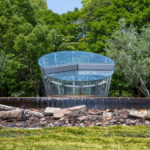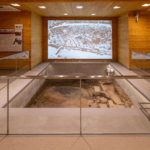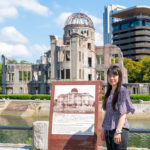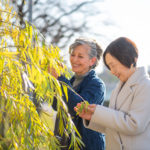Ninoshima: War and atomic bombing

Ninoshima is a calm and beautiful island located 20 minutes away by ferry from Hiroshima Port (Ujina Port) in Minami-Ward, Hiroshima City.
You can enjoy hiking and cycling. You can also enjoy kayaking in Seto Inland Sea.
Ninoshima has been deeply involved in the war (From Sino-Japanese War to Pacific War). The Army Quarantine Station was established in Ninoshima and one of the places where armies who returned from the battlefield arrived first. We have interviews with Mr. MIYAZAKI Kazuo, a researcher of local history.
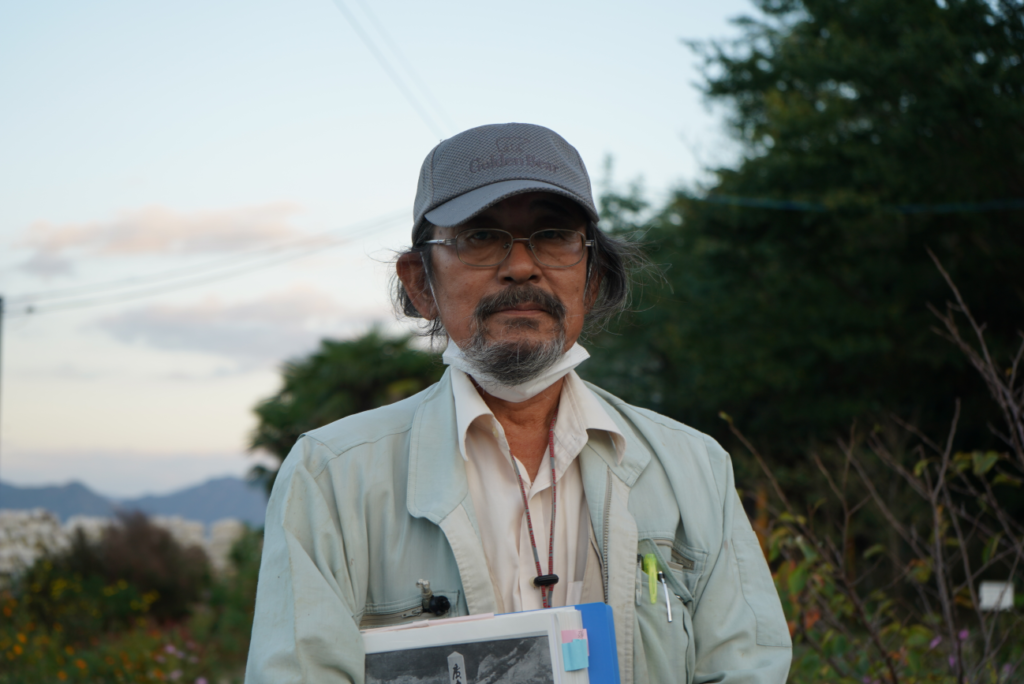
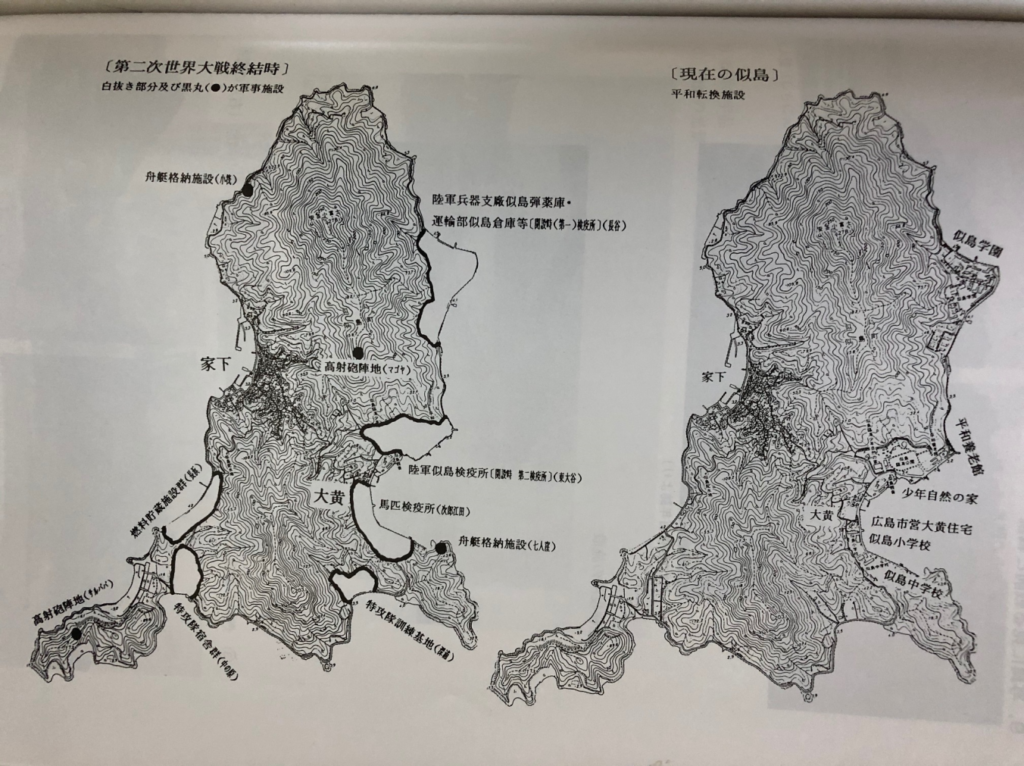
Why the quarantine station was established in Ninoshima?
On June 10, 1894 before the Shino-Japanese war started, Sanyo Railroad opened a new route to Hiroshima. When the Shino-Japanese War broke out, the railroad was connected to Ujina Port. On September 15, the Imperial Headquarters moved to Hiroshima, and the Meiji Emperor arrived on. The Imperial Diet was held in Hiroshima and the city took on the appearance of a provisional capital. It was one of the reasons to establish.
Moreover, Hiroshima (Ujina Port) was a base for troop dispatch and also the reception of returning units and Ninoshima was in a short distance from Ujina. Ninoshima was also a place where a certain amount of water can be secured, and it seems that the convenience of quarantine work was taken into consideration.
1 The Shino-Japanese War (1894-1895)
When the war broke out, returning units from the Korean Peninsula brought in virus, and dysentery and cholera became a pandemic in Japan. The Imperial Army who were worried about this, they established the quarantines in Ninoshima (Hiroshima Prefecture), Hikoshima (Yamaguchi Prefecture) and Sakurajima (Osaka Prefecture). In a short period of about two months, the Ninoshima Army Quarantine Station (The first quarantine station) was first set up.
-1-1024x614.png)
2 The Russo-Japanese War (1904-1905)
When the Russo-Japanese War started, the number of quarantines increased 5 times compared with that of the Shino-Japanese War. Then, the second quarantine station was established. It was a large-scale quarantine station with a daily processing capacity of 8,000 people.

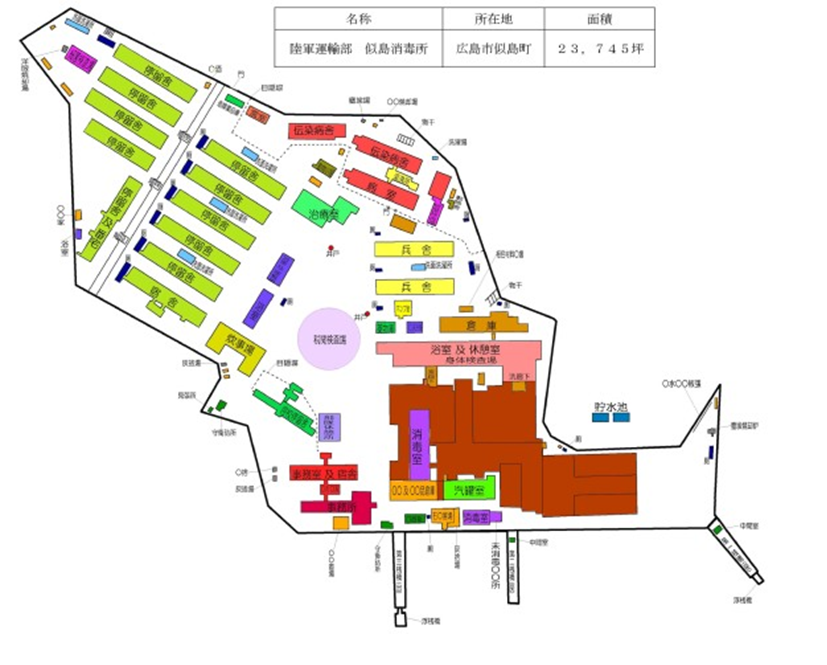
●Ninoshima internment center for prisoners.
Ninoshima internment center for prisoners was established in 1905. There were 51,000 prisoners out of 72,000 prisoners of the Russo-Japanese War. After they got quarantined, they were sent by train from Ujina station to 24 internment centers. There were 17,015 prisoners who were sent to Ninoshima internment center from January 12 to January 19, 1905.
3 World War I (1914-1920)
After World War I broke out in 1914, German prisoners of war (POWs) who had surrendered in Qingdao (Germany’s leased territory) were transported to Japan and accommodated in internment centers in various parts of the country. Subsequently, in 1917, following the decision to relocate the internment center for German POWs in Osaka to Ninoshima Island, a total of 545 POWs were transferred from Osaka to Ninoshima.
For three years until the Ninoshima Internment Center was closed in 1920, POWs engaged in a variety of cultural activities within the facility. This can be seen from the testimonies of islanders that diverse courses (languages, mathematics, mechanical engineering, architectural engineering, electricity, economics, law, history, shorthand, etc.) were offered, newspapers were published, commercial and artistic activities were carried out, and local children begged POWs for sweets, which were rare in Japan in those days.
The German POWs held an exhibition of their works at the Hiroshima Prefectural Commercial Exhibition Hall (the present-day Atomic Bomb Dome) to introduce the advanced industrial technology of their home country. They also held music concerts, soccer games and other sporting events at the Hiroshima Higher Normal School, astonishing and impressing local people.
Among the POWs were Karl Juchheim, famous for his Baumkuchen or traditional German layered cake, and Herman Wolschke, well known for ham and sausage production. Wolschke, together with his fellow POWs, Köln and Stoll, taught manufacturing techniques at Sakai Shokai, a ham maker based in Hirose-cho.


● Ninoshima Ammunition Depot, Hiroshima Army Ordnance Supply Department
In 1921, an ammunition depot of the Army Ordnance Supply Department in Minami-machi, Minami-ku, Hiroshima City, sustained enormous damage from a violent explosion. In 1922, the depot was moved to Ninoshima Island. After the First Quarantine Station (where present-day Ninoshima Gakuen is located) was closed, its premises were used as the Ninoshima Ammunition Depot of the Hiroshima Army Ordnance Supply Department and the Ninoshima Storehouse of the Transport Department.
After the Manchurian Incident took place in 1931 and the Sino-Japanese War broke out later, many divisions departed from and returned to Ujina Port (the present-day Hiroshima Port). When large divisions returned, pupils of the Ninoshima Jinjo Elementary School would welcome returning soldiers at the quarantine station.
● Army Horse Quarantine Station
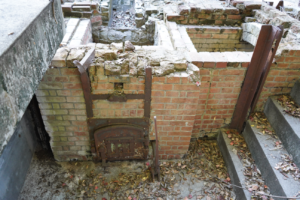 In 1940, the Army Horse Quarantine Station was established on the site that had been purchased from landowners on a mandatory basis to quarantine replacement horses and injured ones returning from mainland China. Currently, Ninoshima Elementary School and Ninoshima Junior High School are located on the site.
In 1940, the Army Horse Quarantine Station was established on the site that had been purchased from landowners on a mandatory basis to quarantine replacement horses and injured ones returning from mainland China. Currently, Ninoshima Elementary School and Ninoshima Junior High School are located on the site.
4 World War II (1941-1945)
Japan’s entry into the Pacific War in December 1941 had an even greater impact on Ninoshima Island. Back in those days, pupils from the Ninoshima Elementary School would often engage in labor service for the Army Ordnance Supply Department.
● Army Fuel Storage Base
In 1942, the Army Fuel Storage Base was built in Nagahama.
● Special Attack Corps Training Base (for the Maritime Assault Squadron, etc.)
From the summer of 1944, education and training for the 10th Training Unit of the Army Marine Training Division, the so-called “marine special attack corps,” began in the Fukaura area and a part of the quarantine station premises. The unit members learned how to handle a small plywood assault boat loaded with a drum of depth charges called marure or a semi-submersible assault boat called maruhase. This fact is not widely known because the unit was a covert organization, all the army facilities in the area were off-limits to the public and the training base was used only for a short period—less than a year. There are still two stone-walled piers remaining on the shore, which remind us of those days.

● Anti-aircraft Cannon Emplacements
In the final days of World War II in 1945, anti-aircraft cannon emplacements were built in Makoya and on Mt. Sarubaba. It is recorded that the anti-aircraft cannon in Makoya shot down an American Grumman fighter plane flying over Hiroshima Bay in late July of the same year.
Near the end of the war, Japan lost control of the sea and of the air, and very few ships, officers and soldiers returned from overseas combat areas, thereby drastically reducing the workload at the quarantine station on Ninoshima Island. On the other hand, prior to the atomic bombing, the quarantine station was designated a temporary first-aid station and stocked with medicines and medical equipment in preparation for large air raids.
● Temporary Field Hospital (The Second Quarantine Station) [August 6-25]
Following the atomic bombing on August 6, 1945, the Imperial Japanese Army’s Shipping Command, which controlled the so-called “Akatsuki Corps,” decided to use the Second Quarantine Station as a temporary field hospital. Therefore, seriously injured A-bomb victims were brought in to receive medical treatment. Of 1,751 Ninoshima residents at that time, a total of 108 people commuting to the center of Hiroshima City lost their lives within a month of the atomic bombing.
It is about eight kilometers in a straight line from ground zero to the northern tip (the nearest part) of Ninoshima Island. From around 10 a.m. on August 6, A-bombed victims were brought in from all over the city of Hiroshima by boat one after another.
Day and night, members of the Akatsuki Corps and youth special attack soldiers struggled to accommodate, treat and nurse the wounded who were brought in incessantly. Ninoshima Islanders joined them in their efforts to help the victims with enormous dedication. It is said that more than 10,000 injured people were brought in. Based on the testimonies of the people involved and the number of remains that were later uncovered, it is estimated that about 70 percent of the people brought in died.
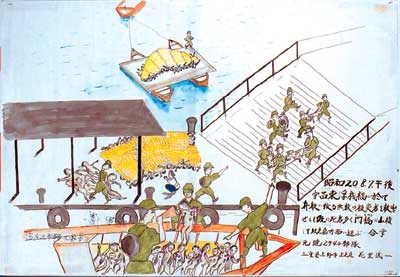

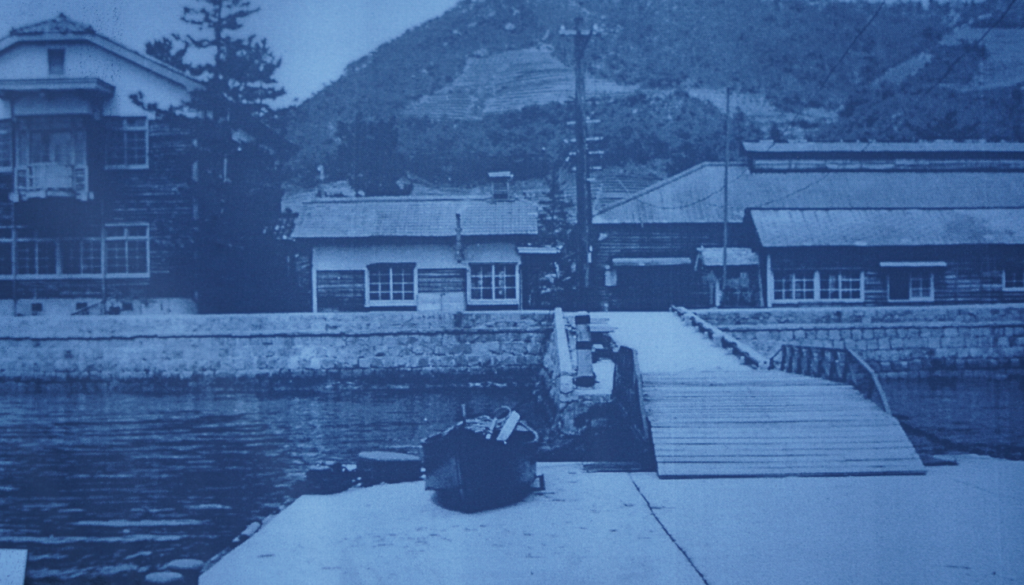
The cremation of deceased A-bomb victims began around August 10. At first, each body was cremated in a painstaking manner. However, with a rapid increase in the number of deaths, cremation became no longer an option and many of the unidentified bodies were buried mainly on the premises of the adjacent Army Horse Quarantine Station. Therefore, the remains of victims have been unearthed from this area from time to time since the end of the war.
In September 1945, a memorial tower called senninzuka was built on the premises of the Army Horse Quarantine Station to house the remains of the victims uncovered by quarantine station staff. Later, in July 1955, the remains of about 2,000 victims were transferred from Ninoshima Island to be housed in the Hiroshima City War Victims Memorial Tower in the Hiroshima Peace Memorial Park.
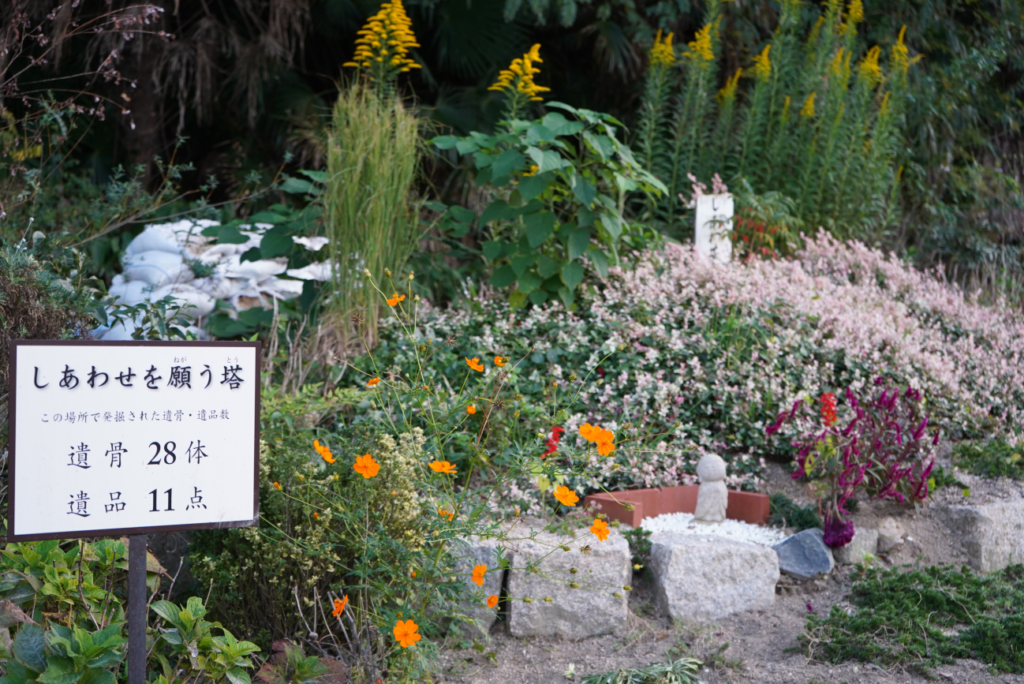
5 Ninoshima Gakuen: A-bomb and War Orphans’ Home
After the war, Mr. MORI Yoshimaro (the first director of Ninoshima Gakuen), Mr. YOSHIKAWA Yutaka (the second director) and their fellows, who saw how A-bomb and war orphans were living on the street, appealed to the prefectural and city governments to help them build an orphans’ home, emphasizing that children should live in a nursing home instead of a temporary shelter. As a result, they were able to lease from the Japanese government the sites of the former ammunition depot of the Army Ordnance Supply Department and the former storehouse of the Army Transport Department, which had been confiscated by the national government during the war. Then, they developed a concrete plan to establish Ninoshima Gakuen, an educational institution for war orphans.
In the beginning of September in 1946, a total of 34 street children living near Hiroshima Station were taken into protective custody all at once. At the same time, at the request of the government authorities, the director and staff of Ninoshima Gakuen completed preparations in a rush and the orphans’ home was opened one month earlier than originally scheduled.
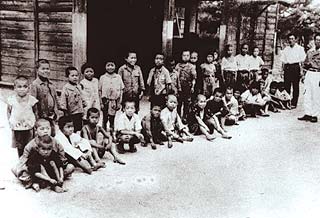
In 1951, Mr. Norman Cousins, an advocate of the “moral adoption” program*, visited the orphans’ home.
* The “moral adoption” program enabled Americans to help raise A-bomb orphans.
For more information, please visit:https://hiroshimaforpeace.com/en/fukkoheiwakenkyu/vol3/3-14/
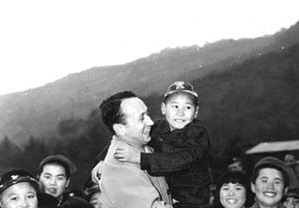
On November 27, 2003, a linden tree was donated by the Student Center for German-Japanese Cultural Exchange in Dusseldorf, Germany, in memory of the deceased prisoners of war and for the sake of Japan-Germany friendship.

As you can see, Ninoshima Island is not only a great leisure spot to enjoy the beautiful sea and mountains but also a place deeply connected with the wars and atomic bombing experienced by modern Japan.
How about enjoying a fulfilling time by relaxing in the nature of the island, enjoying the sea and mountains, and visiting historic spots dotted around the island to reflect on its history?
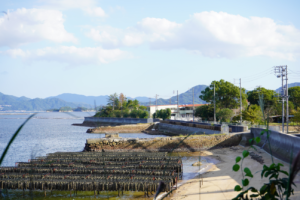
Reference Material:
・“Orally Transmitted Information and Historical Facts about Ninoshima Island (Ninoshima no Kuden to Shijitsu),” Federation of Neighborhood Associations of Ninoshima, Local History Compilation Committee
・“Another Hiroshima (Mo Hitotsu no Hiroshima),” NAKAZATO Mitsuharu
・“Our Homeland Ninoshima (Furusato Ninoshima)” [peace education material]
・Interview with local historian Mr. MIYAZAKI Kazuo in October 2020
Tags associated with this article



